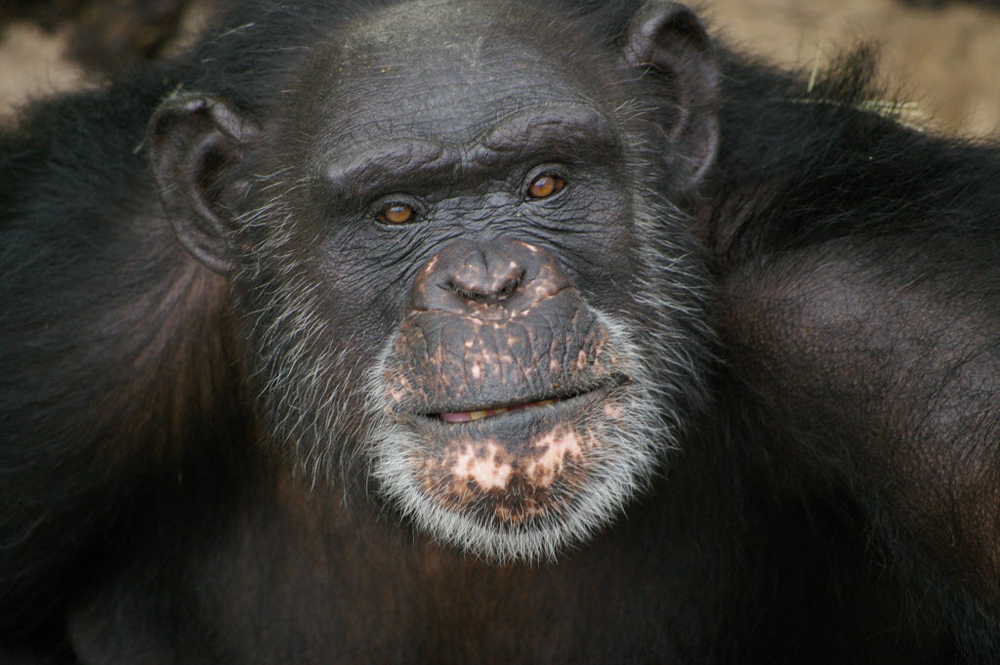Chimp-Painted Art is Expressive, Even When Painted by Tongue (Op-Ed)


Wayne Pacelle is the president and chief executive officer of The Humane Society of the United States (HSUS). This Op-Ed is adapted from a post on the blog A Humane Nation, where the content ran before appearing in LiveScience's Expert Voices: Op-Ed & Insights.
We do a lot of serious business at The HSUS, taking all kinds of cruelty head-on. But we also celebrate animals, taking stock of the diversity of life and the incredible attributes of the other creatures on the planet.
HSUS supporters may have received an e-mail from me a few weeks ago announcing an art contest — in this particular contest, the artists are very strong, very hairy and very smart.
They are, in fact, chimps — and let's just say they haven't been classically trained. [Images: Chimpanzee Art Contest Winners Revealed in Photos ]
We enlisted six member organizations of the North American Primate Sanctuary Alliance, and asked if a chimp at each facility would create and submit a piece of art. Modern, impressionist, abstract expressionist, still life with banana. It was their prerogative.
In the end, six sanctuaries submitted pieces, and 27,000 people cast votes to choose a winner. Jane Goodall, famed primatologist and U.N. Messenger of Peace, also chose her favorite.
Last week, we announced the winners.
Get the world’s most fascinating discoveries delivered straight to your inbox.
Brent's masterpiece — painted with, of all things, his tongue — won the public vote and his sanctuary, Chimp Haven of Louisiana, won a grant of $10,000 from The HSUS.
Cheetah, of Save the Chimps in Florida, whose seriousness and concentration while painting are unmistakable, placed second in the online voting and also won the coveted selection by Goodall, winning a total of $10,000. Ripley of the Center for Great Apes in Florida won third prize, for a $2,500 grant. The paintings by Jamie of Chimpanzee Sanctuary Northwest, Jenny of Primate Rescue Center, and Patti of Chimps, Inc., convey the unique style of each chimpanzee.
Many people are clamoring and demanding to know how they can get their own chimpanzee art — and let me assure you, your cries will be heard, as we're planning an online auction of the paintings this fall to benefit NAPSA, of which our own Cleveland Amory Black Beauty Ranch, operated by our affiliate The Fund for Animals, is a member.
We are glad that the chimpanzees at these sanctuaries have the time and security to pursue their creative genius. That was not always the case for them. Brent, Cheetah, Jenny and Jamie were all used in biomedical research. Cheetah lived in isolation for years and was subjected to over 400 liver biopsies. Ripley and Patti were used in entertainment — performing on camera or before crowds.
They are all serving as ambassadors for those chimpanzees who still languish in laboratories and are used in the entertainment industry today.
The HSUS has worked hard to get all chimpanzees out of laboratories and into safe places, and a recent decision by the National Institutes of Health to retire more than 300 chimpanzees along with a proposal by the U.S. Fish & Wildlife Service to list all chimpanzees as endangered under the Endangered Species Act will mean a sharp decline in these exploitive activities. [America's Fleeting Chance to Correct Chimps' Endangered Status (Op-Ed)]
We at The HSUS have always said that making sure chimpanzees are safe in sanctuary is just as important as ending their use in exploitative activities. We are grateful to sanctuaries that work so hard to provide enriching lives for these animals. We will be sure to stop and celebrate the retirement of each and every one. See the rest of the masterpieces here.
Pacelle's most recent Op-Ed was "Sharks Gain Protections in India, Will U.S. Follow Suit?". This article was adapted from "From Monet and Picasso to Brent and Cheetah" which first appeared on the HSUS blog A Humane Nation. The views expressed are those of the author and do not necessarily reflect the views of the publisher. This version of the article was originally published on LiveScience.






